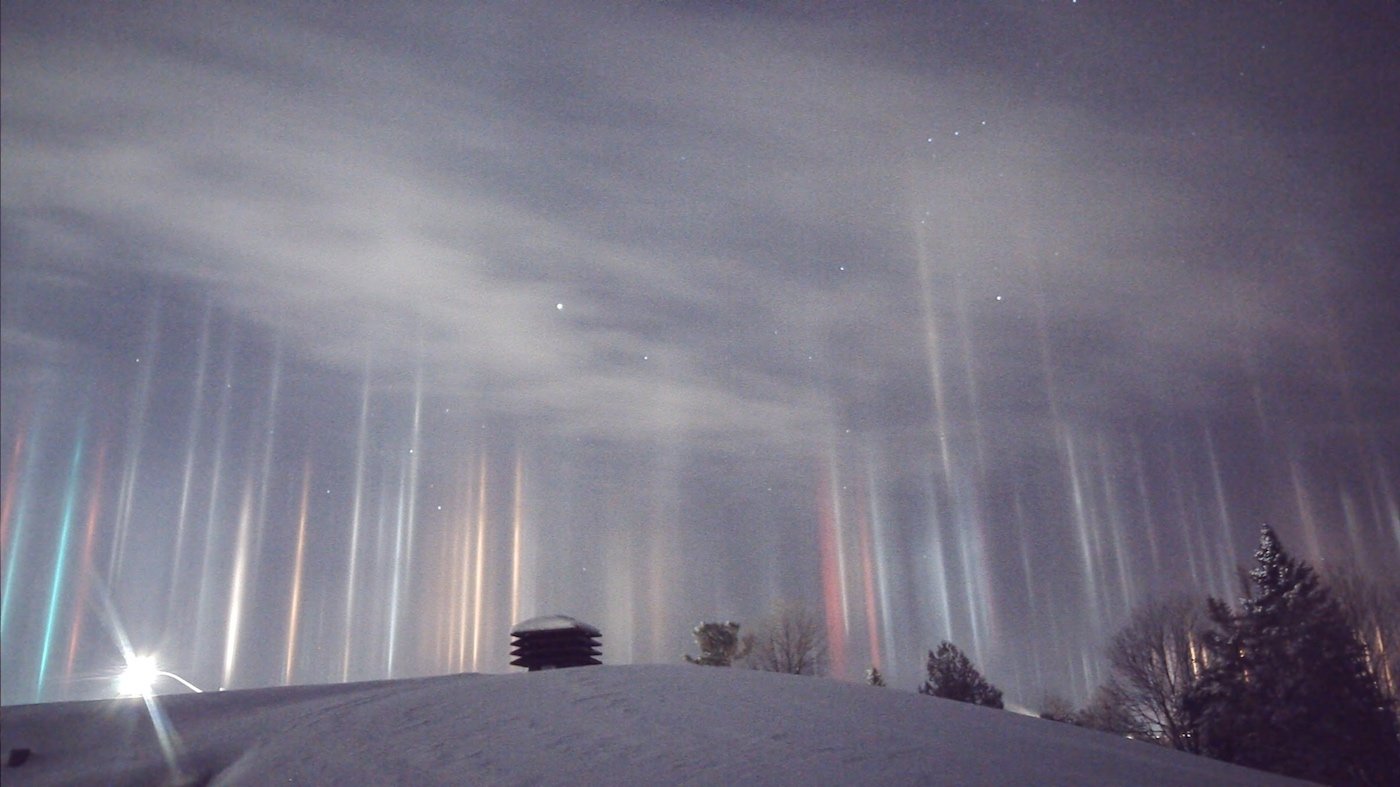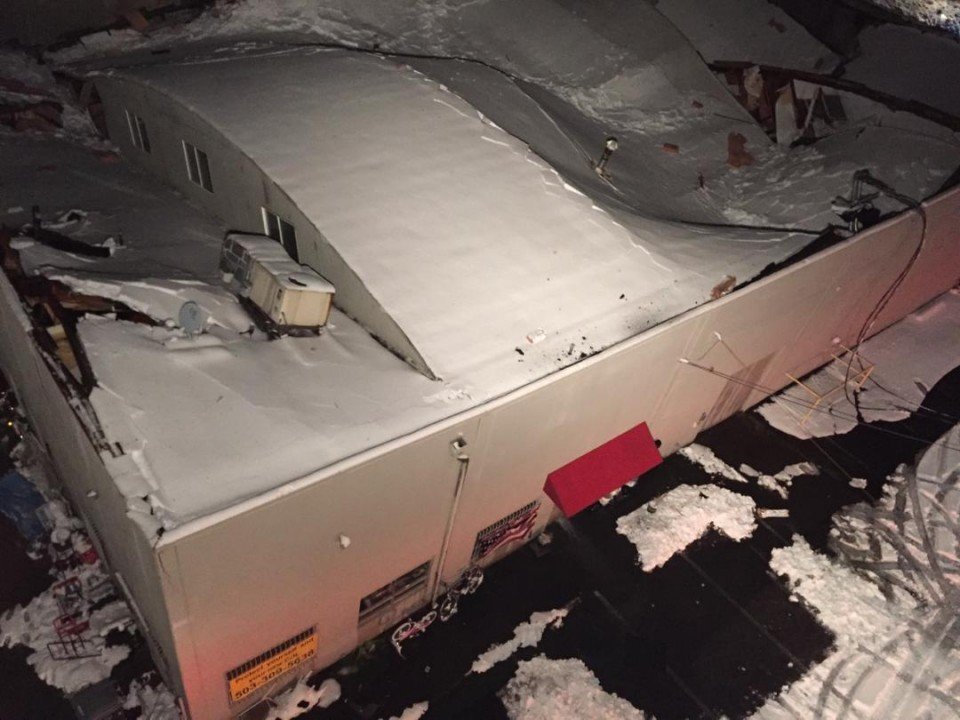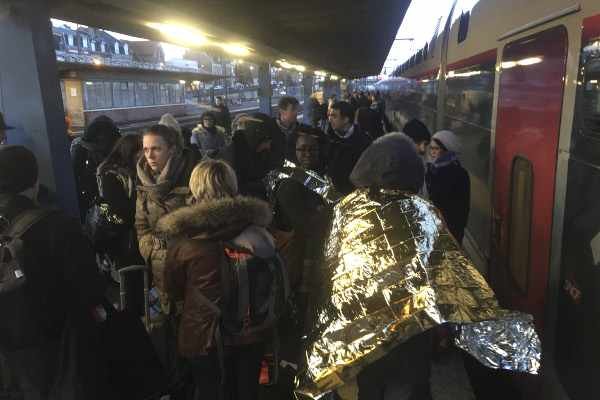
© Timmy Joe Elzinga/YouTubeTimmy Joe Elzinga captured this image of light pillars in northern Ontario on Jan. 6, 2017, at 1:30 a.m. local time.
Despite appearances, aliens have not descended upon a snowy scape in Ontario, Canada. Rather,
an Earthly phenomenon is the cause of a ring of brilliant shafts of pastel-colored lights, captured in the wee hours of the morning by Timmy Joe Elzinga using his smartphone camera.
It was 1:30 a.m. local time in northern Ontario on Jan. 6 when Elzinga spotted the phenomenon.
"When I first saw these light beams shooting through the sky from my bathroom window, I was sure they were the
northern lights," Elzinga told Live Science in an email. "I was able to capture these images both because the lights were so bright and pronounced and because I'm a bit of an amateur photographer." That experience, he said, led him to use "the manual settings on my phone to adjust the time the aperture was open to 8 seconds."
Elzinga said he wasn't aware of this light-pillar phenomenon until he saw it firsthand.
Ice from high altitudes explains the pillars that Elzinga saw, NASA said. During some cold, wintry nights, flat ice crystals that normally reside higher up in the atmosphere come fluttering closer to the ground,
according to NASA. These whimsically wobbling ice crystals are sometimes referred to as crystal fog. When the crystals reflect ground lights from nearby cars and other bits of civilization, the result can be glorious: columns of light called "light pillars."




Comment: The last recorded eruption of Bogoslof was in 1992. The Aleutian Islands, with their 57 volcanoes, are in the northern part of the Pacific Ring of Fire, a region prone to frequent earthquakes and volcanic eruptions.